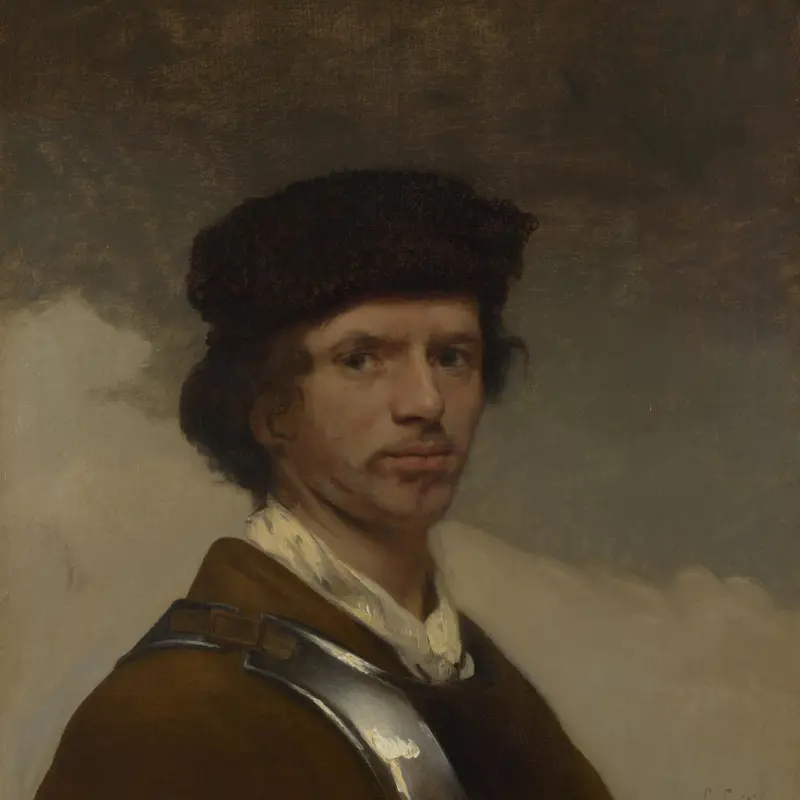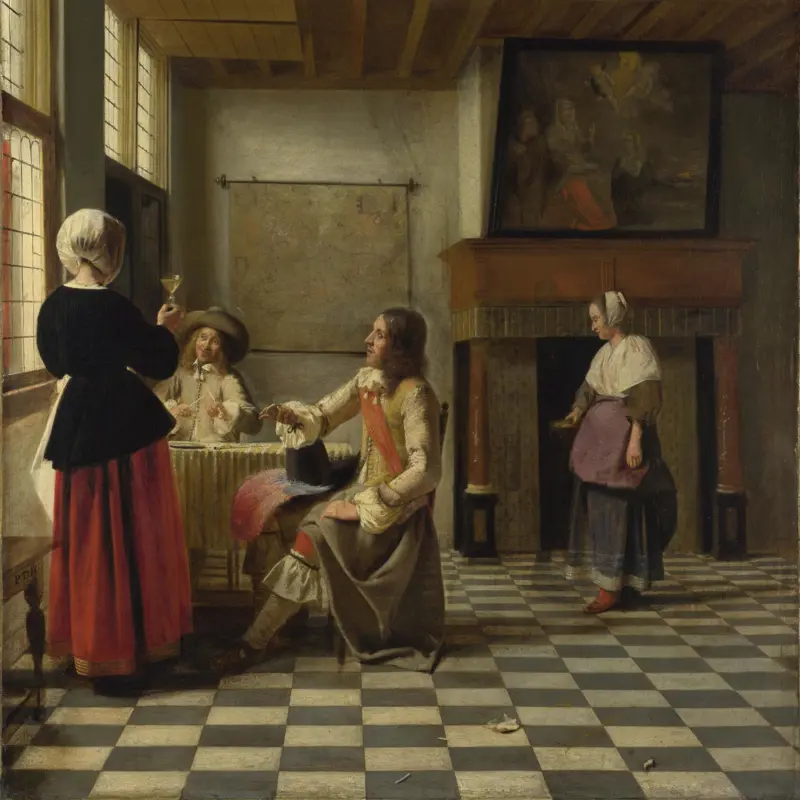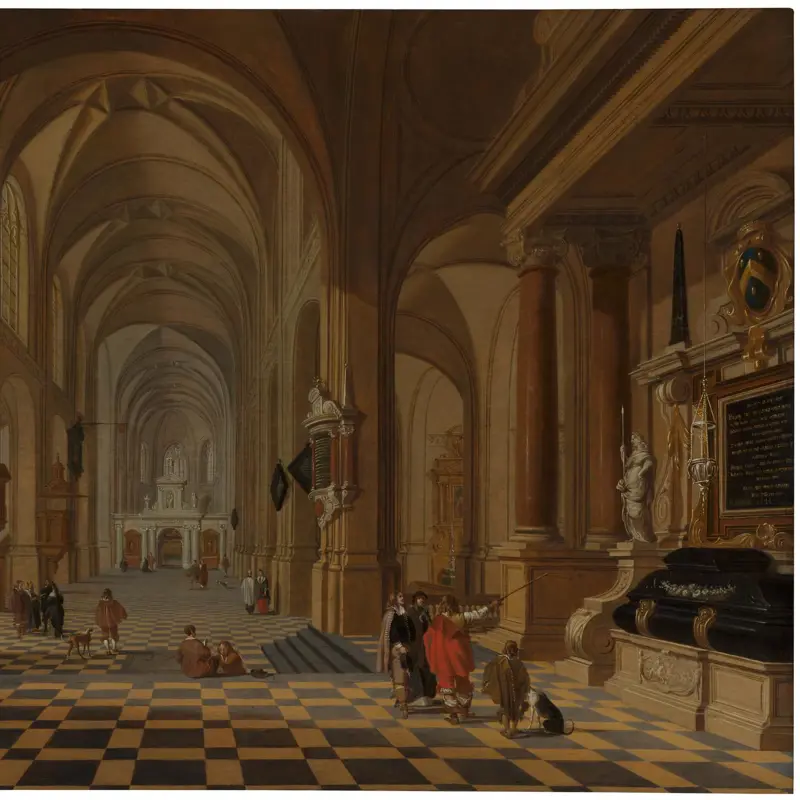Among Rembrandt’s pupils in Amsterdam in the 1640s was the Dordrecht painter Samuel van Hoogstraten. He produced portraits and scenes of everyday life but is best known for works that are meant to deceive the eye. Perspective is the technique used to represent three-dimensional space on a two-dimensional surface to create a convincing illusion of depth. It was a central concern for many 17th-century Dutch artists. Hoogstraten took this interest further by experimenting with various optical effects. His most famous work is the peepshow in this room. Through his careful alignment of the painted elements, Hoogstraten illustrates his sophisticated understanding of the art of perspective.
The brilliant and tragically short-lived painter Carel Fabritius was a pupil of Rembrandt at the same time as Samuel van Hoogstraten. He settled in Delft, and like his contemporary Johannes Vermeer, is best known for his innovative use of light, but he also shared Van Hoogstraten’s interest in optical illusions. His View of Delft would originally have been mounted on a concave support inside a box. Looking through a peephole in the box, viewers would have seen a corrected version of the scene’s distorted perspective. Fabritius painted it in 1652, two years before he died in the gunpowder explosion that destroyed much of the city of Delft.







